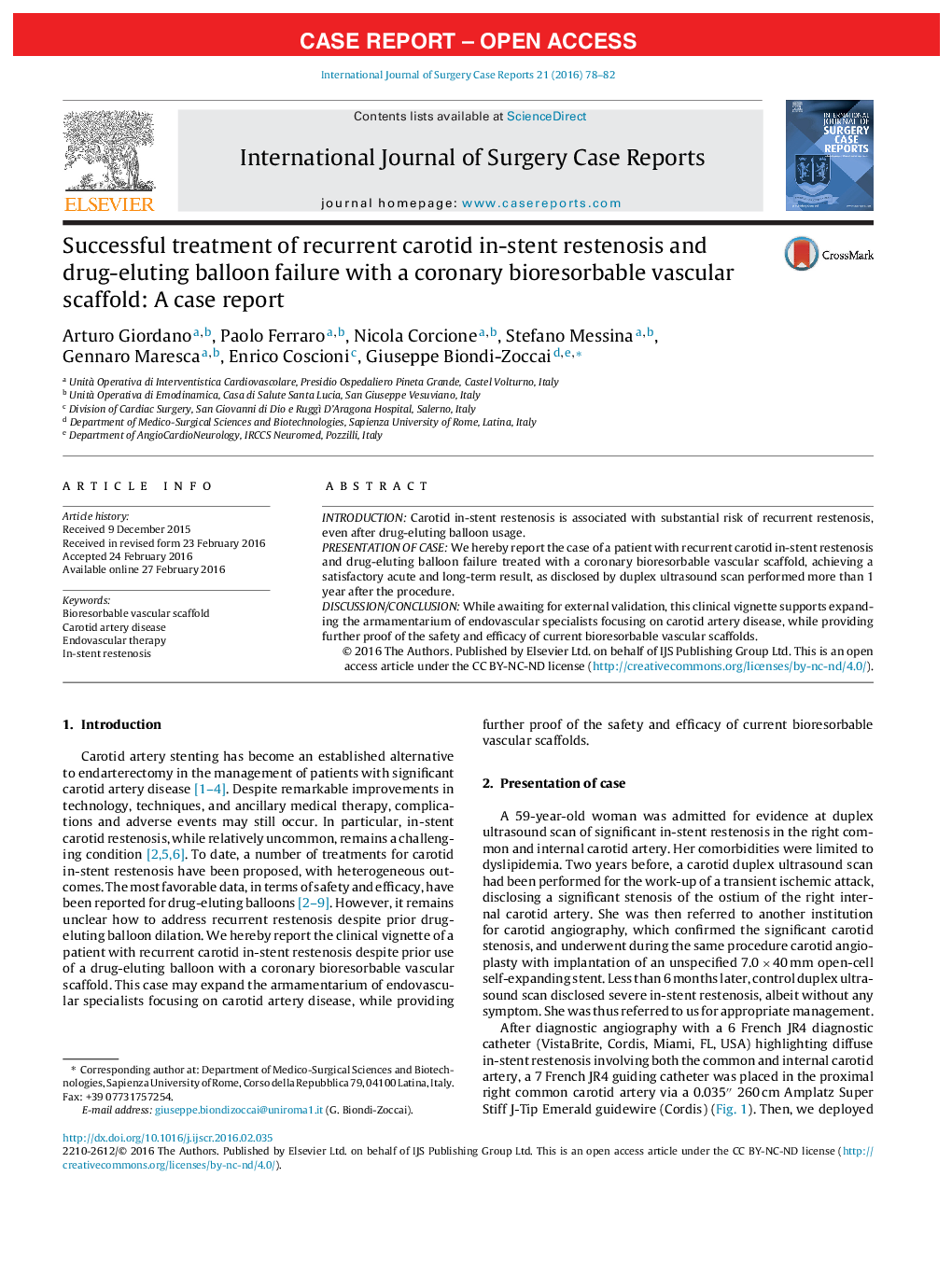| Article ID | Journal | Published Year | Pages | File Type |
|---|---|---|---|---|
| 4288366 | International Journal of Surgery Case Reports | 2016 | 5 Pages |
•The management of carotid in-stent restenosis remains challenging, with several potential management strategies available, but none clearly best.•Bioresorbable vascular scaffolds have proved safe and effective in patients with coronary artery disease, but their use for carotid in-stent restenosis is unprecedented, yet promising.•Bioresorbable vascular scaffolds could become a useful adjunct to the armamentarium of endovascular specialists, including those managing patients with carotid in-stent restenosis, especially if further refinements in sizes and designs are achieved.
IntroductionCarotid in-stent restenosis is associated with substantial risk of recurrent restenosis, even after drug-eluting balloon usage.Presentation of caseWe hereby report the case of a patient with recurrent carotid in-stent restenosis and drug-eluting balloon failure treated with a coronary bioresorbable vascular scaffold, achieving a satisfactory acute and long-term result, as disclosed by duplex ultrasound scan performed more than 1 year after the procedure.Discussion/conclusionWhile awaiting for external validation, this clinical vignette supports expanding the armamentarium of endovascular specialists focusing on carotid artery disease, while providing further proof of the safety and efficacy of current bioresorbable vascular scaffolds.
